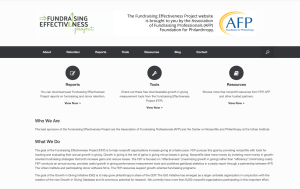Intervention by nonprofits had the biggest impact on turnout of the least likely voters in the most recent midterm elections, according to a new study.
“Engaging New Voters: The Impact of Nonprofit Voter Outreach on Client and Community Turnout” by Nonprofit VOTE examined demographics and turnout rates of some 29,000 voters contacted by 129 nonprofits across nine states during the 2014 midterm elections. The report was compiled in collaboration with the Center for Information & Research on Civic Learning and Engagement (CIRCLE) at Tufts University’s Tisch College of Citizenship and Public Service.
“Nonprofits are trusted messengers with deep roots in communities overlooked by others. This makes them uniquely positioned to play an important role in increasing voter turnout,” said Brian Miller, executive director of Nonprofit VOTE. “When they engage the communities they serve in voting and elections, they are highly effective at creating new voters and expanding the electorate,” he said.
Voters engaged by nonprofits were more diverse, lower income and younger than all other registered voters in the nine states. Those contacted were almost twice as likely to be younger than 30, more than three time as likely to be Latino or black, and nearly four times as likely to have household incomes of less than $25,000.
Asking voters who are already registered to vote to sign cards pledging to vote boosted turnout by 11 percent compared with all registered voters (48 percent).
Personal contact by nonprofit staff and volunteers increased voter turnout rates across all demographics. Voter turnout was higher by:
- 5 points for Latino voters;
- 10 points for black voters;
- 16 points for Asian-American voters; and,
- 9 points for those with incomes of less than $25,000.
Nonprofits had their biggest impact on people least expected to vote and most likely to be overlooked by partisan campaigns, according to result in the study. More than half of the voters engaged by nonprofits were identified by campaigns as “low propensity” voters who were not expected to vote in 2014. They also were twice as likely to be younger than 30 and four times as likely to be new American voters — Latino and Asian-American with a history of low turnout.
“Partisan campaigns focus narrowly on likely voters pre-identified as supporting their candidate. As a result, the majority of young and new citizen voters are never contacted by campaigns about the election,” said Steve Taylor, senior vice president for public policy at United Way Worldwide. “Nonprofits, who collectively reach over 100 million people nationally, can help fill the critical gap through nonpartisan voter engage. This report should provide the encouragement they need to do exactly that,” he said.











